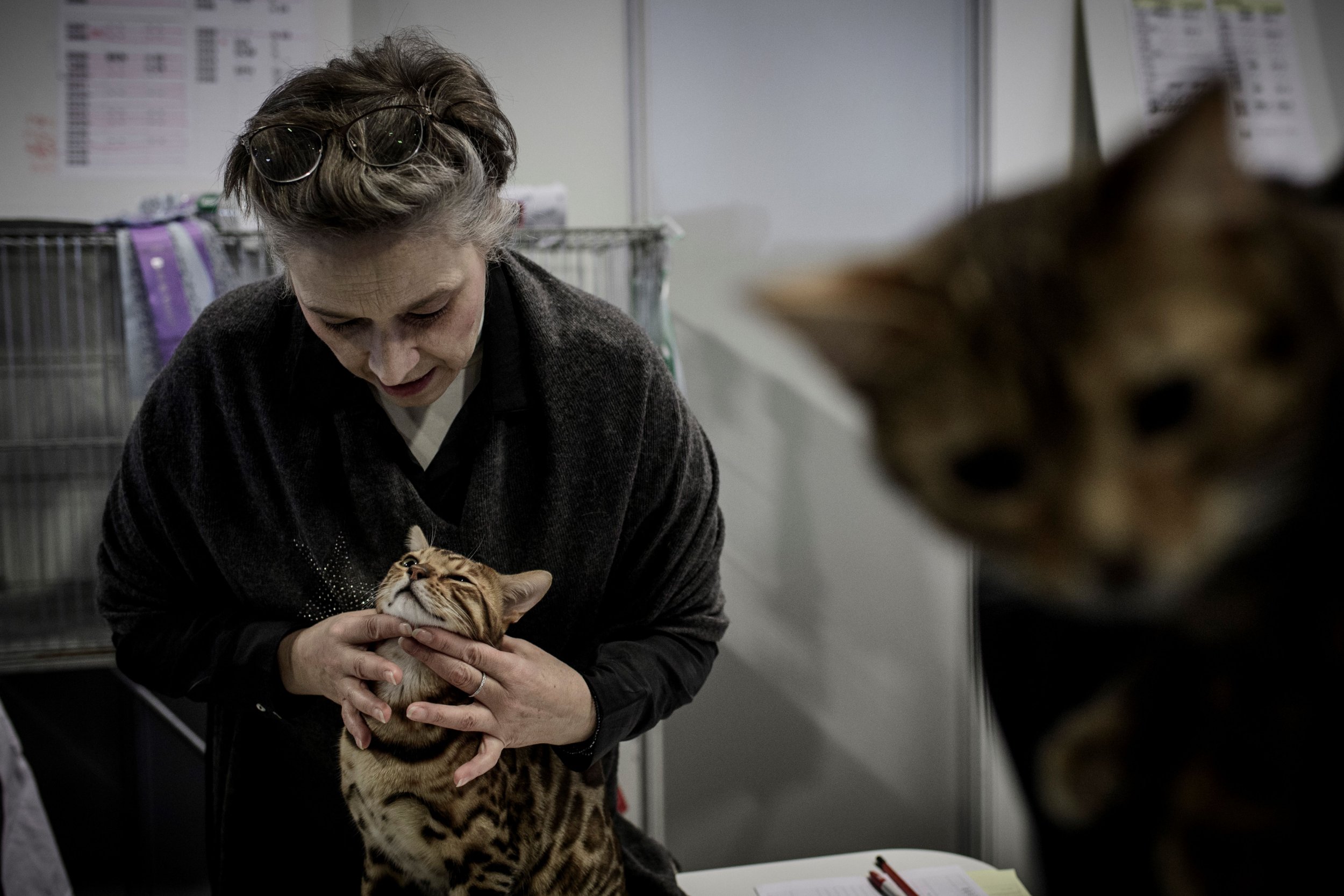
Just like humans, pet cats tend to favor one side, using one paw or lying down on one side more than the other. In the most adorable study protocol of all time, researchers from the Queen's University Belfast watched as 44 cats reached for food from an unusual feeder, laid down, slinked down stairs and stepped into their litter boxes. The researchers published their findings in Animal Behavior in December.
About one-third of the cats appeared to be "right-pawed" while another third were truly southpaws. The remaining third didn't have a clear preference. (For comparison, about 90 percent of humans are right-handed.) Male cats had a higher chance of being lefties than female cats.
Those numbers are a bit different than the distribution one of the researchers found during a previous study, which used tasks including getting a piece of food out of a jar with a small opening and whacking a toy mouse to see if a pet's "handedness" might be influenced by the difficulty of the task. (Whacking the toy was considered less difficult.) In that case, about half of the cats favored one paw; just one used both equally.

NPR asked the authors of this study if the handedness behaviors might also be linked to psychological or personality differences among felines. "There is some suggestion that limb preference might be a useful indicator of vulnerability to stress," researcher Deborah Wells told reporter and anthropologist Barbara King. "Left-limbed animals, which tend to be right-hemisphere dominant, show stronger fear responses than right-limbed animals, which tend to be left-hemisphere dominant." (This may be true for humans, too; one study in 2007 concluded that within a group of people who met the criteria for a possible post-traumatic stress disorder, there were significantly more lefties than expected.)
In fact, Wells and her colleagues found in 2016 that cats that didn't have a paw preference "were perceived as less affectionate, obedient, friendly and more aggressive" than their handed peers. Right-pawed cats also appeared to be more playful to their owners than left-pawed cats.
Watching your cat's behavior can shed light on their coping mechanisms in other ways, too. A cat might use its paw to get food out of a dish—while that might provide a clue to handedness, it may also be a sign of "whisker fatigue," according to the New York Times. The condition occurs when a cat's whiskers become irritated by brushing the side of its food bowl.
Regardless of your cat's handedness, it's never a bad idea to watch out for clear signs of stress which the Cornell Feline Health Center notes can include excessive licking. Other signs can include hiding more than usual, eating and drinking too little (or not enough) and not using the litter box correctly.
Uncommon Knowledge
Newsweek is committed to challenging conventional wisdom and finding connections in the search for common ground.
Newsweek is committed to challenging conventional wisdom and finding connections in the search for common ground.
About the writer
Kate Sheridan is a science writer. She's previously written for STAT, Hakai Magazine, the Montreal Gazette, and other digital and ... Read more
To read how Newsweek uses AI as a newsroom tool, Click here.








